Year circa 1503 Accession INV 776 Dimensions 1.68 m x 1.12 m | Media Oil paint | |
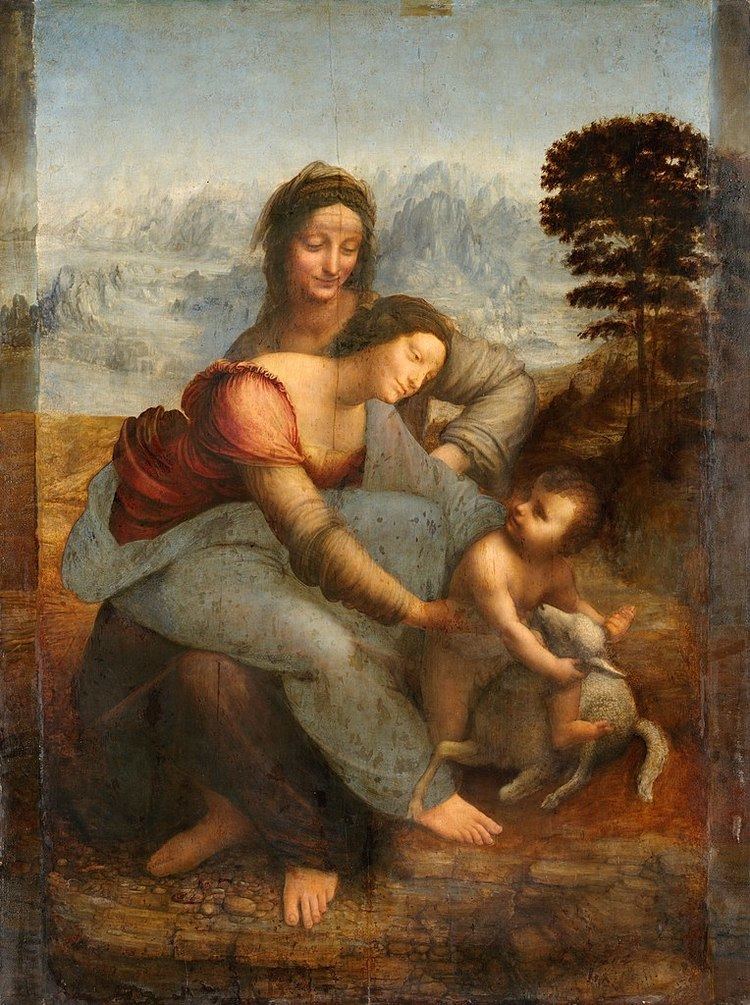 | ||
Similar Leonardo da Vinci artwork, Artwork at The Louvre, High Renaissance artwork | ||
The Virgin and Child with Saint Anne is an oil painting by Leonardo da Vinci depicting St Anne, her daughter the Virgin Mary and the infant Jesus. Christ is shown grappling with a sacrificial lamb symbolizing his Passion as the Virgin tries to restrain him. The painting was commissioned as the high altarpiece for the Church of Santissima Annunziata in Florence and its theme had long preoccupied Leonardo.
Contents
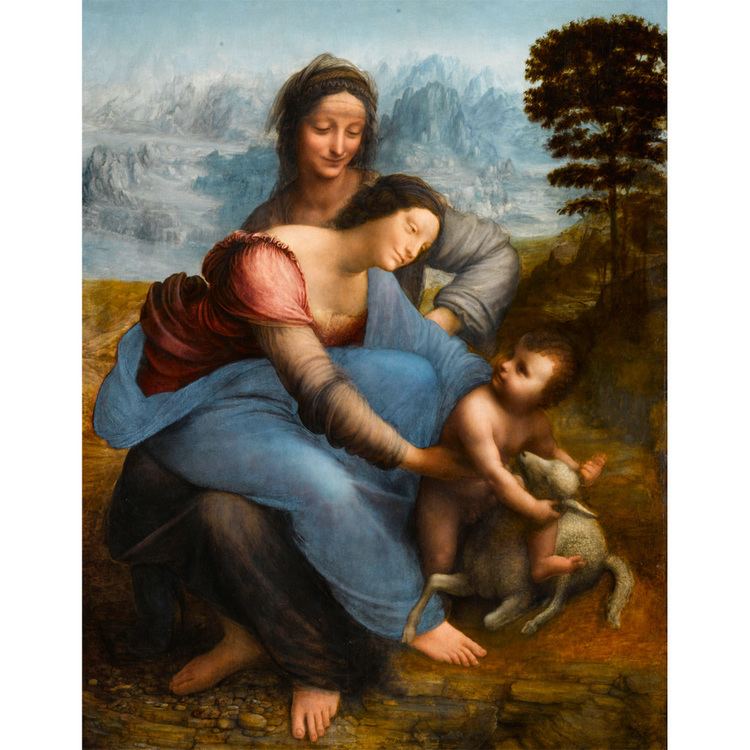
History
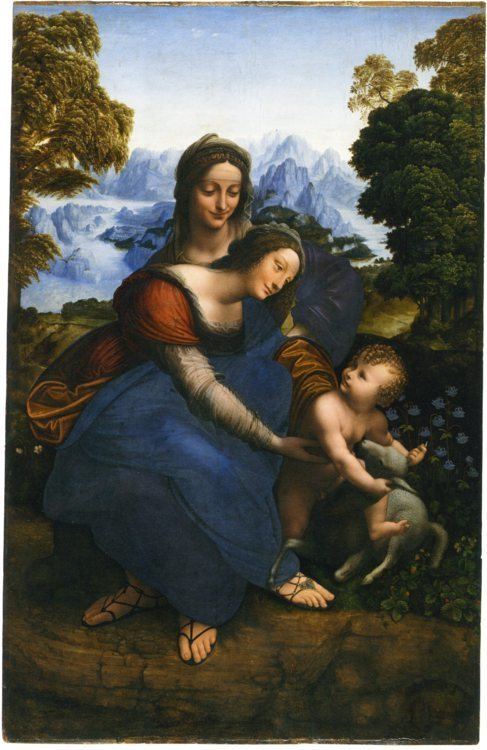
In 1498, Leonardo probed into incorporating these figures together by drawing the Burlington House Cartoon (National Gallery). In 2008, a curator at the Louvre discovered several faint sketches believed to have been made by Leonardo on the back of the painting. Infrared reflectography was used to reveal a "7-by-4 inch drawing of a horse's head", which had a resemblance to sketches of horses that da Vinci had made previously before drawing The Battle of Anghiari. Also revealed was a second sketch 6 1⁄2 inch-by-4 inch depiction of half a skull. A third sketch showed the infant Jesus playing with a lamb, which sketch was similar to that which is painted on the front side. The Louvre spokesperson said that the sketches were "very probably" made by Leonardo and that it was the first time that any drawing had been found on the "flip side of one of his works". The drawings will be further studied by a group of experts as the painting undergoes restoration.
Content and composition
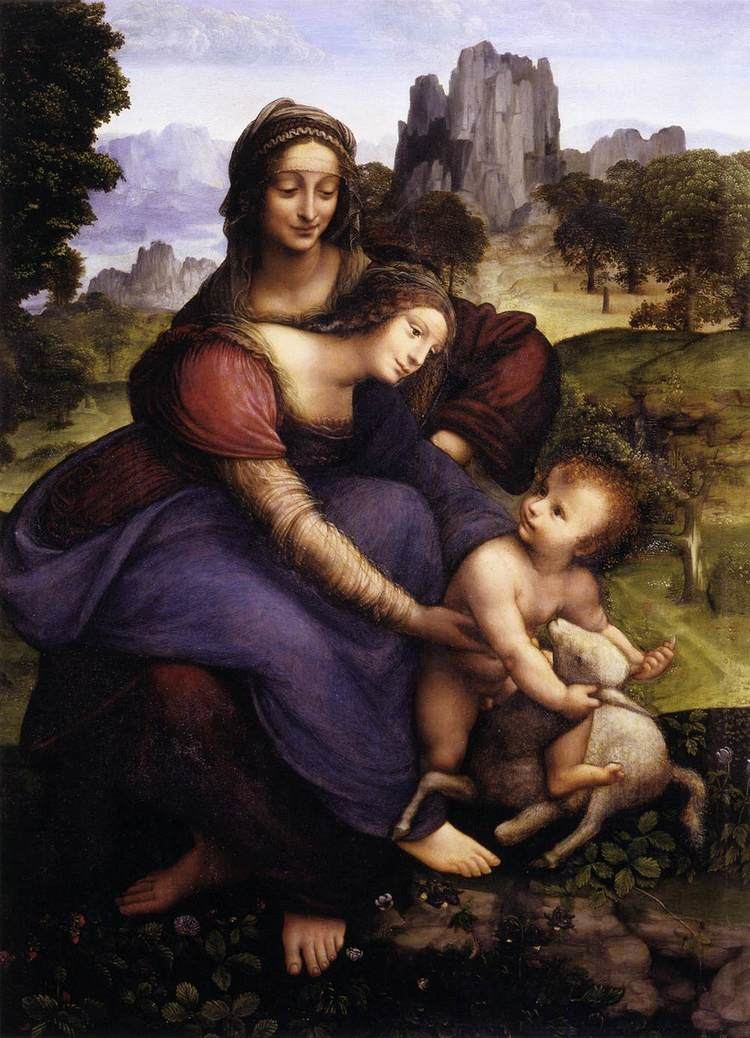
Leonardo's painting is at once both pleasing, calm yet confusing upon closer examination. The composition of the three figures is fairly tight, with the Virgin Mary clearly interacting actively with the infant Jesus. Upon closer examination of their positioning it is apparent that Mary is sitting on St Anne's lap. It is unclear what meaning this could have and what meaning Leonardo intended to project with that pose. There is no clear parallel in other works of art and women sitting in each other's lap are not a clear cultural or traditional reference that the viewer can relate to. Additionally, although the exact sizes of neither the Mother Virgin nor St Anne are known, it can be extrapolated from the painting that St Anne is a significantly larger person than Mary. This subtle yet perceptible distortion in size was utilized by Leonardo to emphasize the mother daughter relationship between the two women despite the apparent lack of visual cues to the greater age of St Anne that would otherwise identify her as the mother. The child is holding a lamb.
Freudian interpretation
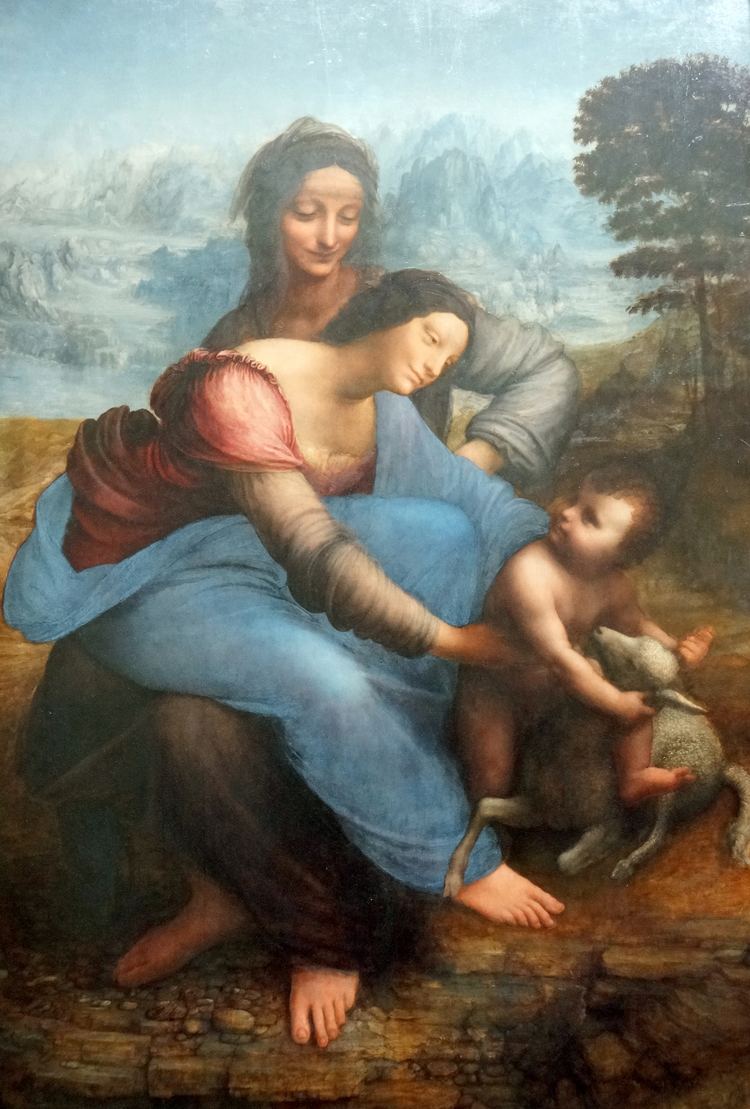
Sigmund Freud undertook a psychoanalytic examination of Leonardo in his essay Leonardo da Vinci, A Memory of His Childhood. According to Freud, the Virgin's garment reveals a vulture when viewed sideways. Freud claimed that this was a manifestation of a "passive homosexual" childhood fantasy that Leonardo wrote about in the Codex Atlanticus, in which he recounts being attacked as an infant in his crib by the tail of a vulture. Freud translated the passage thus:
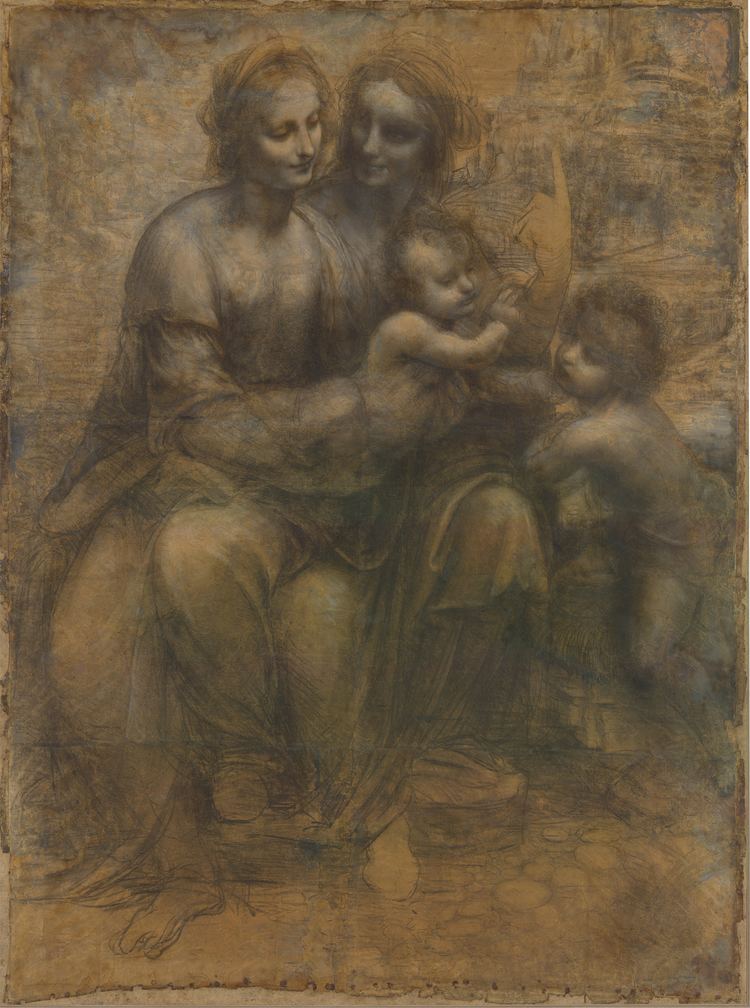
According to Freud, this fantasy was based on the memory of sucking his mother's nipple. He backed up his claim with the fact that Egyptian hieroglyphs represent the mother as a vulture, because the Egyptians believed that there are no male vultures and that the females of the species are impregnated by the wind.
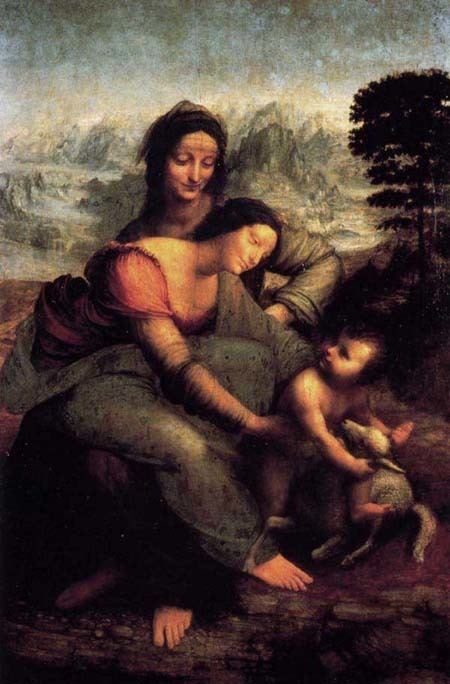
Unfortunately for Freud, the word 'vulture' was a mistranslation by the German translator of the Codex and the bird that Leonardo imagined was in fact a kite, a bird of prey which is also occasionally a scavenger. This disappointed Freud because, as he confessed to Lou Andreas-Salomé, he regarded Leonardo as 'the only beautiful thing I have ever written'. Some Freudian scholars have, however, made attempts to repair the theory by incorporating the kite.
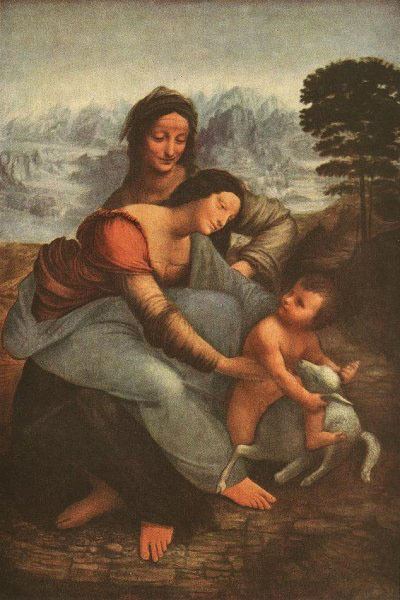
Another theory proposed by Freud attempts to explain Leonardo's fondness of depicting the Virgin Mary with St Anne. Leonardo, was raised by his blood mother initially before being 'adopted' by the wife of his father Ser Piero. The idea of depicting the Mother of God with her own mother was therefore particularly close to Leonardo's heart, because he, in a sense, had 'two mothers' himself. It is worth noting that in both versions of the composition (the Louvre painting and the London cartoon) it is hard to discern whether St Anne is a full generation older than Mary.
2011 cleaning controversy
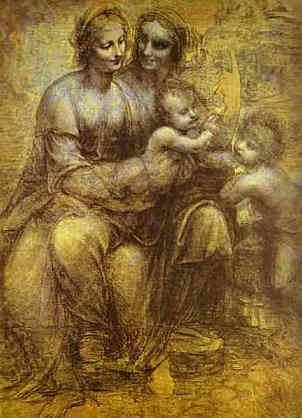
On 7 October 2011 Le Journal des Arts, a Paris art publication, reported that the restoration posed more danger to the painting than was previously expected. In late December 2011 and early January 2012 reports emerged that Ségolène Bergeon Langle, the former director of conservation for the Louvre and France’s national museums, and Jean-Pierre Cuzin, the former director of paintings at the Louvre, both of the advisory committee supervising the painting’s restoration, had resigned over a painting cleaning controversy, with critics claiming that the painting has been damaged by being cleaned so it became brighter than the artist ever intended. Other experts spoke out in favour of the cleaning treatment.
